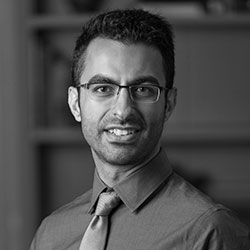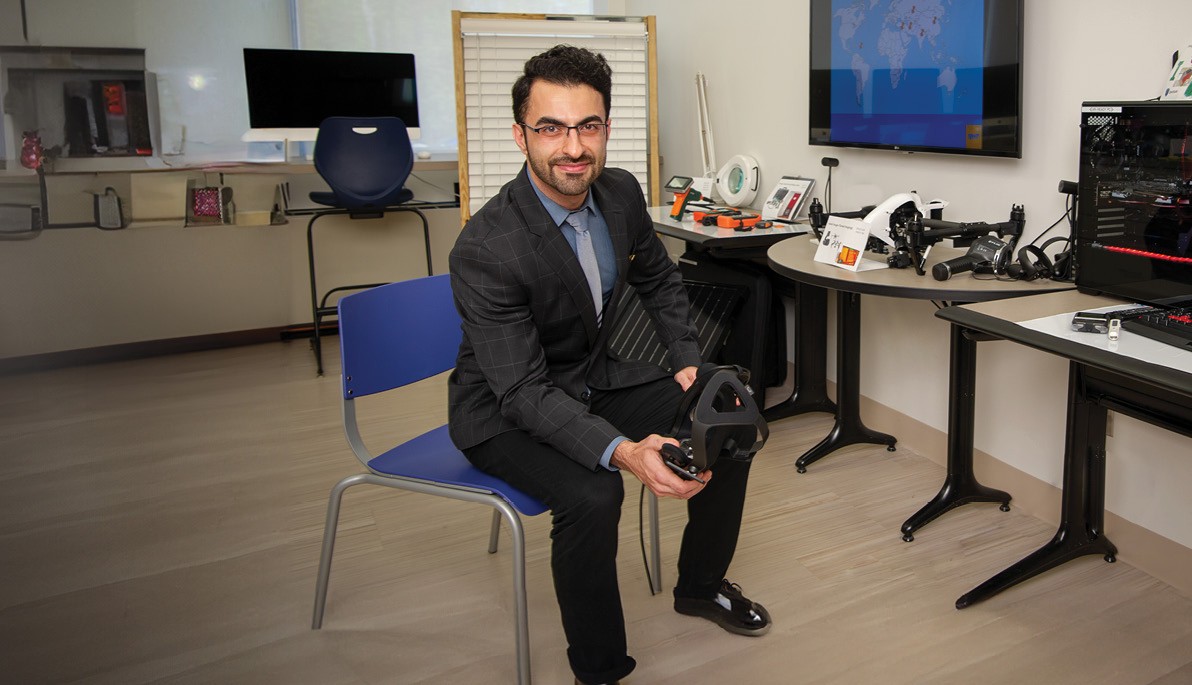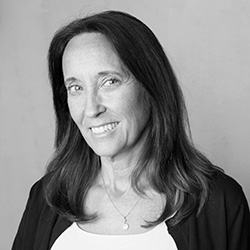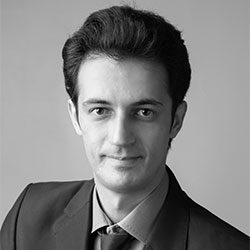In Pursuit of Energy Efficiency
“I have a longstanding passion for research, so I knew I wanted a career path that would allow me to serve my curious mind and explore new topics within my field,” says Associate Professor Ehsan Kamel, Ph.D. “Discovering New York Tech, with its unique program dedicated to energy management, was incredibly exciting. It seemed to be the perfect fit for my aspirations.”
Arriving at New York Tech right out of graduate school from Pennsylvania State University, Kamel was a little nervous to stand at the front of the classroom for the first time. However, he found the environment immediately welcoming, and his confidence was buoyed by the positive energy and encouragement he felt from the faculty and staff at the College of Engineering and Computing Sciences. “Feeling supported and respected is crucial, especially at the beginning of such an academic journey. This was particularly significant for me as I taught my first class as a professor before the age of 30!”
Kamel’s scholarship has won him multiple awards and publications on energy engineering, which involves the study and practical application of diverse technologies and systems to effectively generate, distribute, and utilize energy resources. “Energy engineering plays a pivotal role in devising sustainable energy solutions; optimizing energy utilization in buildings, transportation, and industrial processes; and mitigating environmental impacts,” says Kamel. Innovations in the field include energy-efficient appliances, smart thermostats, advanced insulation materials, electric vehicles, large-scale energy storage, hydrogen fuel cells, and smart grids where electric loads in buildings can be automatically shifted or reduced.
“I specialize in developing computer models that forecast the performance of buildings across various operational and climate scenarios. Sometimes they include thousands of buildings,” says Kamel. “Our primary aim is to project their energy consumption within both current and future climate conditions, the latter being notably influenced by climate change. Additionally, we model diverse building technologies in our models, such as new insulation material, window technologies, energy management and control systems, and efficient heating and cooling systems to measure their potential energy saving and carbon emission reductions within the building sector.”
These models, rooted in thermodynamic physics equations, are commonly referred to as physics-based models. However, we also use machine learning techniques when faster calculations are needed,” he explains.
According to Kamel, though climate demands a coordinated global response, it’s also important to recognize how different economic and geographical factors shape countries’ priorities. “Regions with abundant renewable energy resources, such as solar-rich areas or windy coastal regions, often prioritize the development of renewable energy infrastructure,” he says. “At the same time, industries with high energy demands, such as manufacturing, transportation, and data centers, are actively seeking innovative energy engineering solutions to reduce costs, enhance efficiency, and minimize environmental impact.”
Kamel says this search is especially important in the building and construction sector. While much focus is placed on energy efficiency in a building’s operations and climate control, Kamel proposes that energy efficiency must be considered much earlier and include all stages of the building’s life cycle. “Material selection and construction and methods employed in construction are known as ‘embodied energy,’ and researchers are actively engaged in efforts to enhance efficiency and diminish embodied energy in this phase as well,” he says.
Kamel’s work engages governments, research institutions, and energy companies to collaborate on advancing energy engineering technologies to achieve a more sustainable and resilient planet. He submits grants to federal funding agencies like the National Science Foundation and NASA, as well as state grant agencies such as New York State Energy Research and Development Authority. For instance, past funding supported research on New York Tech’s campus buildings and initiatives to train the future workforce in green energy within New York. He was recognized for his cutting-edge research in the clean energy sector by City & State New York and was named to its inaugural list of Trailblazers in Clean Energy.
Furthermore, Kamel collaborates with research-active universities both domestically and internationally, facilitating student exchanges, paper publications, and joint grant proposals. This global collaboration enriches research endeavors and fosters knowledge exchange across borders. He also works with energy companies in the United States, addressing real-world challenges related to building energy efficiency. His laboratory provides essential expertise in building energy modeling, aiding companies in optimizing their energy usage and contributing to broader sustainability efforts in the industry.
It might even yield results that take us beyond the planet someday. “I am also exploring their potential application in energy-efficient habitats beyond Earth in the future. We are particularly focused on the prospect of constructing habitats on Mars. Our research involves creating models that assess the energy performance of these habitats under various conditions, leveraging Mars climate data gathered by rovers and stations on the planet’s surface. These simulations are based on construction materials specific to the Martian landscape. By modeling these materials and accounting for Mars’ climate conditions, we aim to ensure that habitats built on the planet are not only energy efficient but also appropriate for the comfort and sustainability of their inhabitants and potentially supporting plant life. This research represents an innovative step toward enabling human habitation beyond Earth.”











